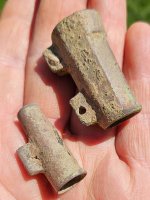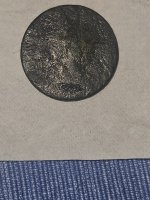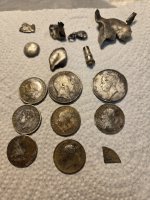Snarkie
Jr. Member
First off, I must apologize for my sporadic posts. My time online is limited, due to my work, so I kind of have to cram. That aside:
How does one go about melting colors into a nugget? Last year, I tried this with some 10K jewelry and a torch, and within the period of a second or so, it evaporated.
I have a substancial amount of mini nuggets and wire that I have accumulated in AK and NC, and would like to make it into a small nugget. I don't want to vaporize it like the last time. Any suggestions?
Snark
How does one go about melting colors into a nugget? Last year, I tried this with some 10K jewelry and a torch, and within the period of a second or so, it evaporated.
I have a substancial amount of mini nuggets and wire that I have accumulated in AK and NC, and would like to make it into a small nugget. I don't want to vaporize it like the last time. Any suggestions?
Snark
Amazon Forum Fav 👍
Upvote
0









